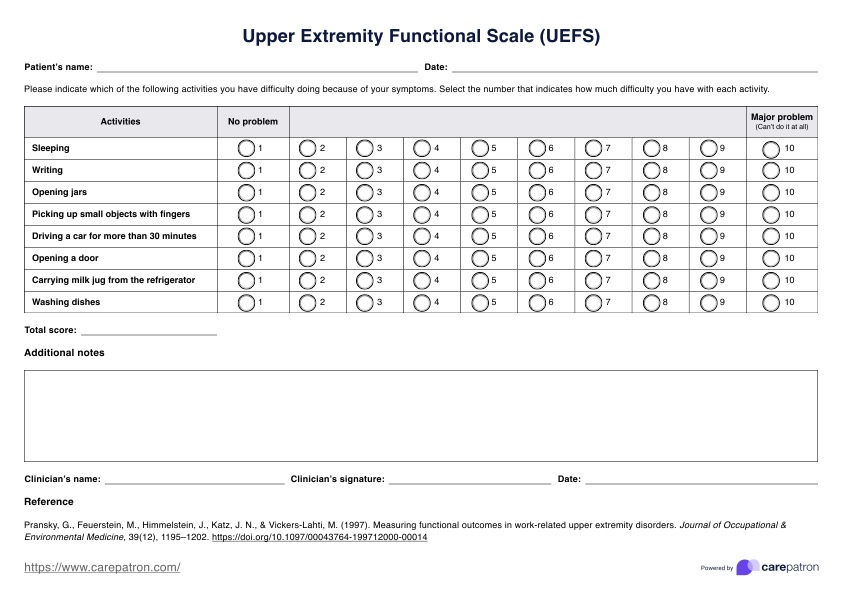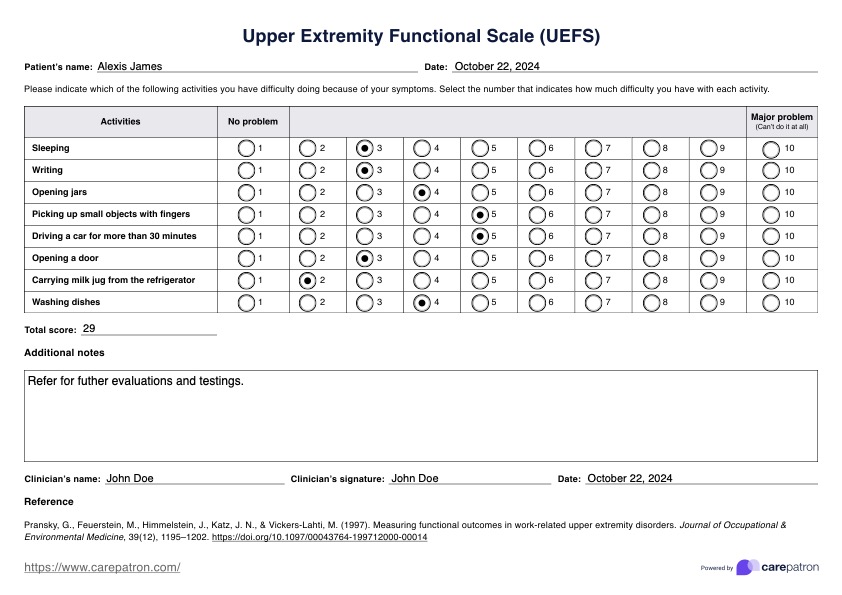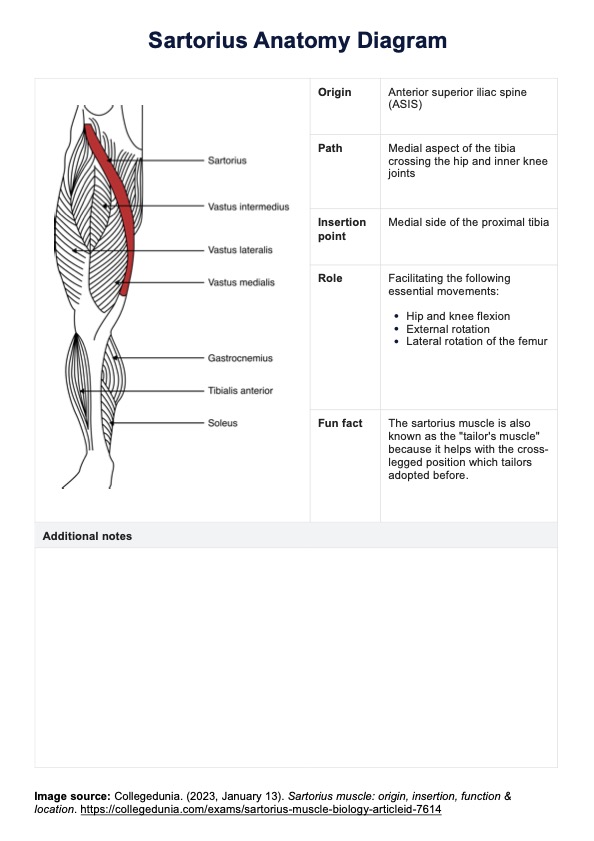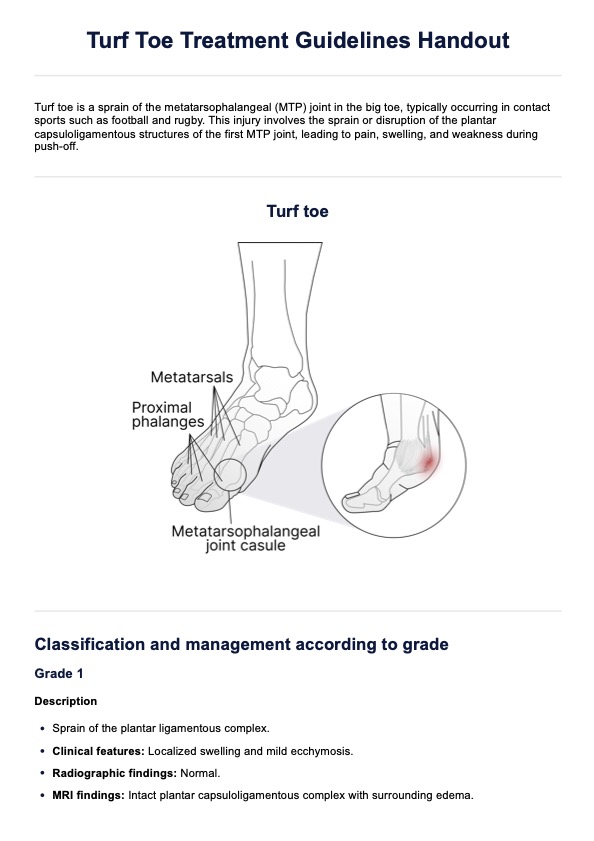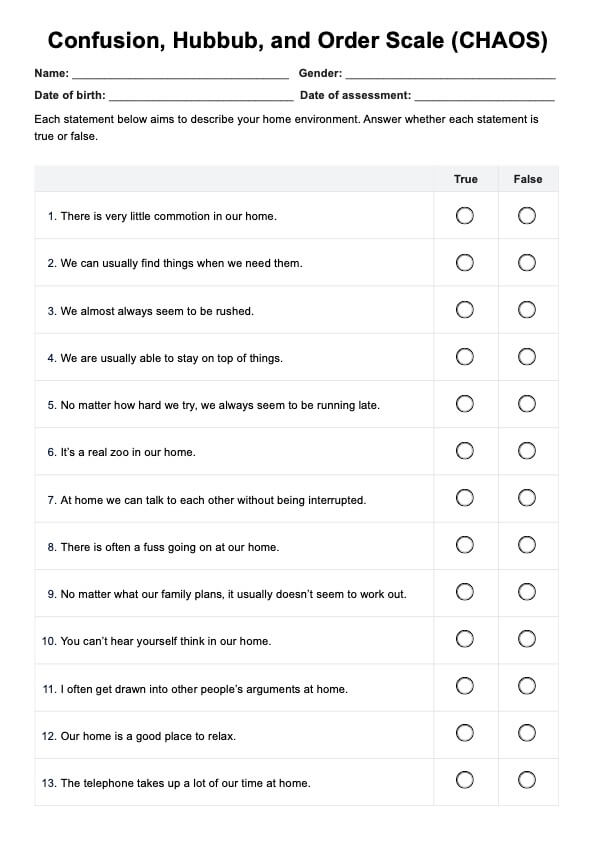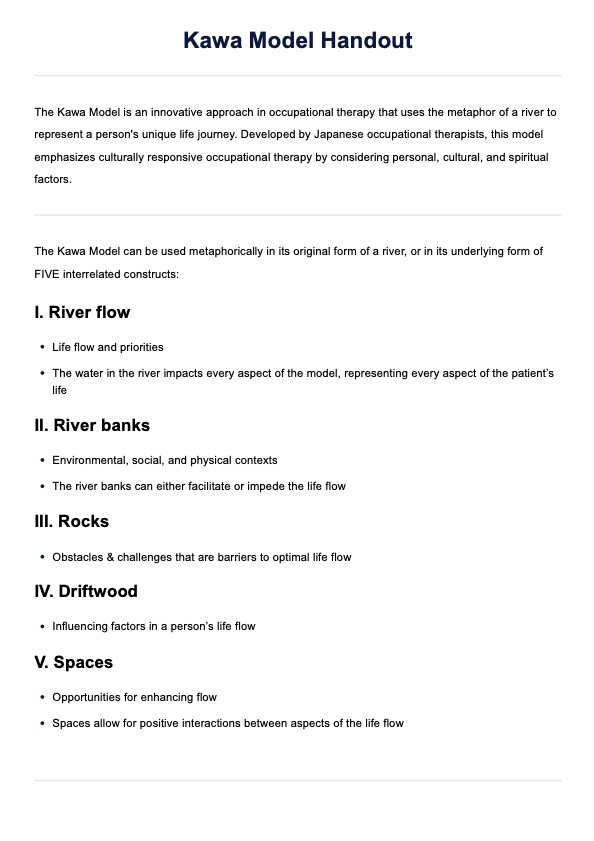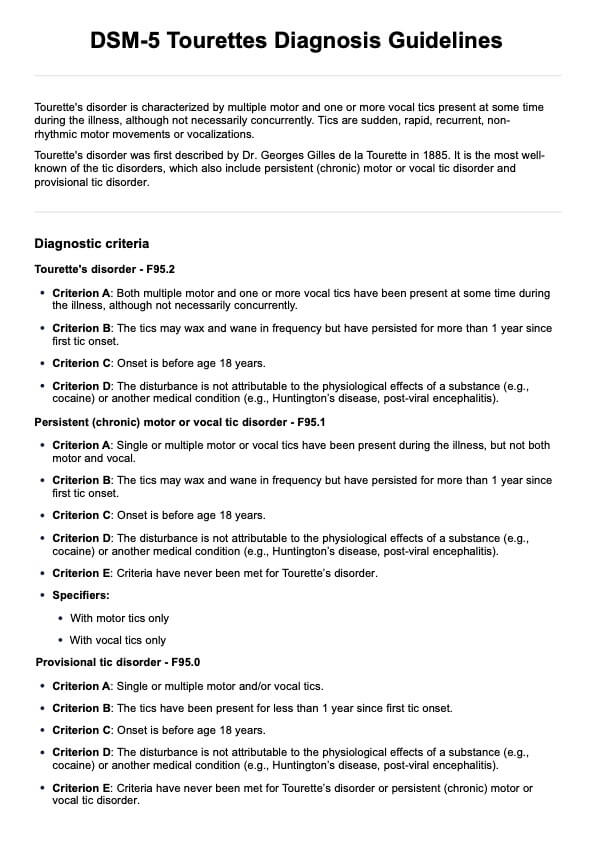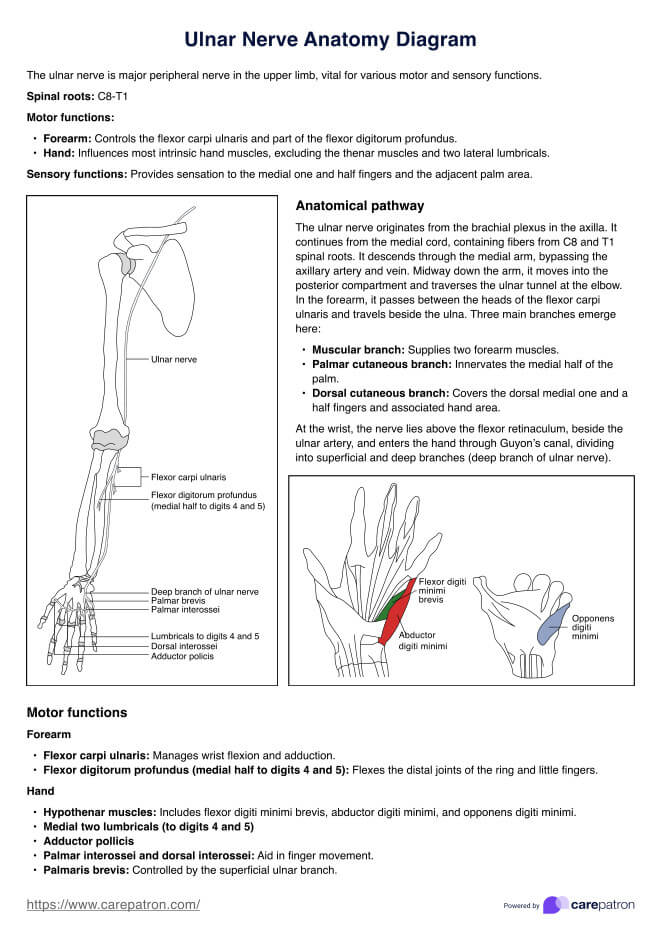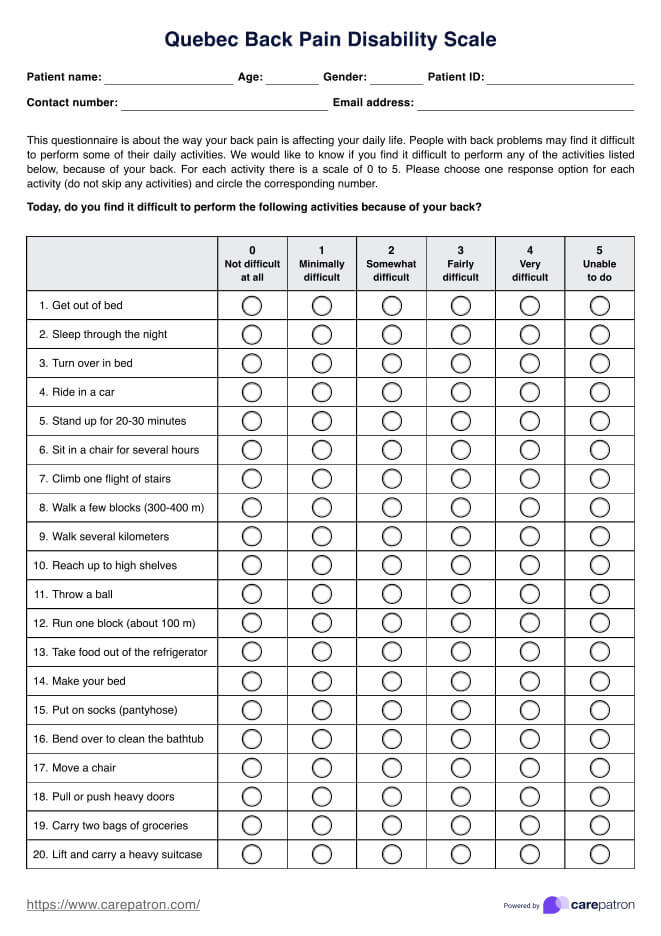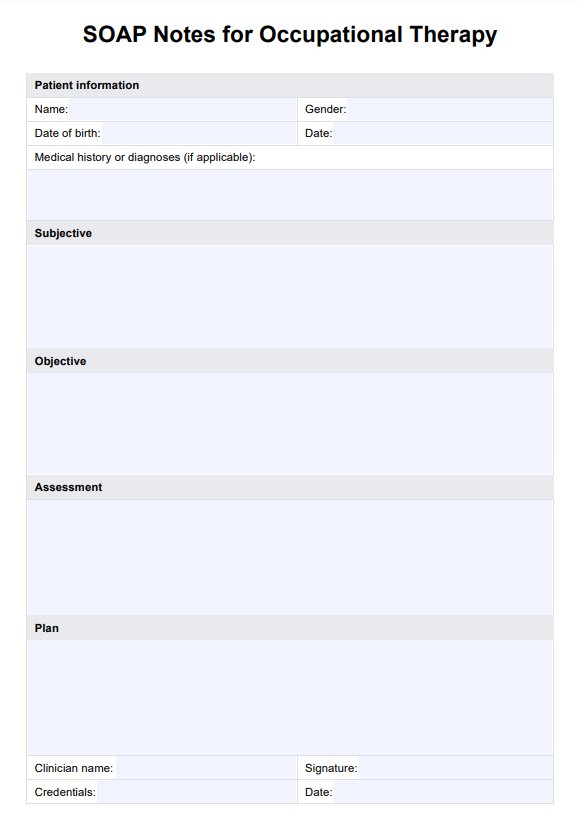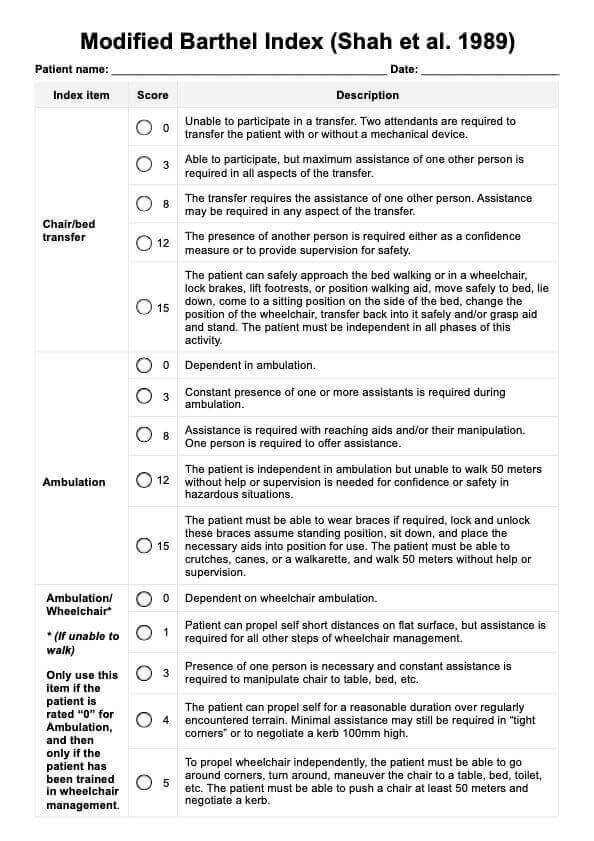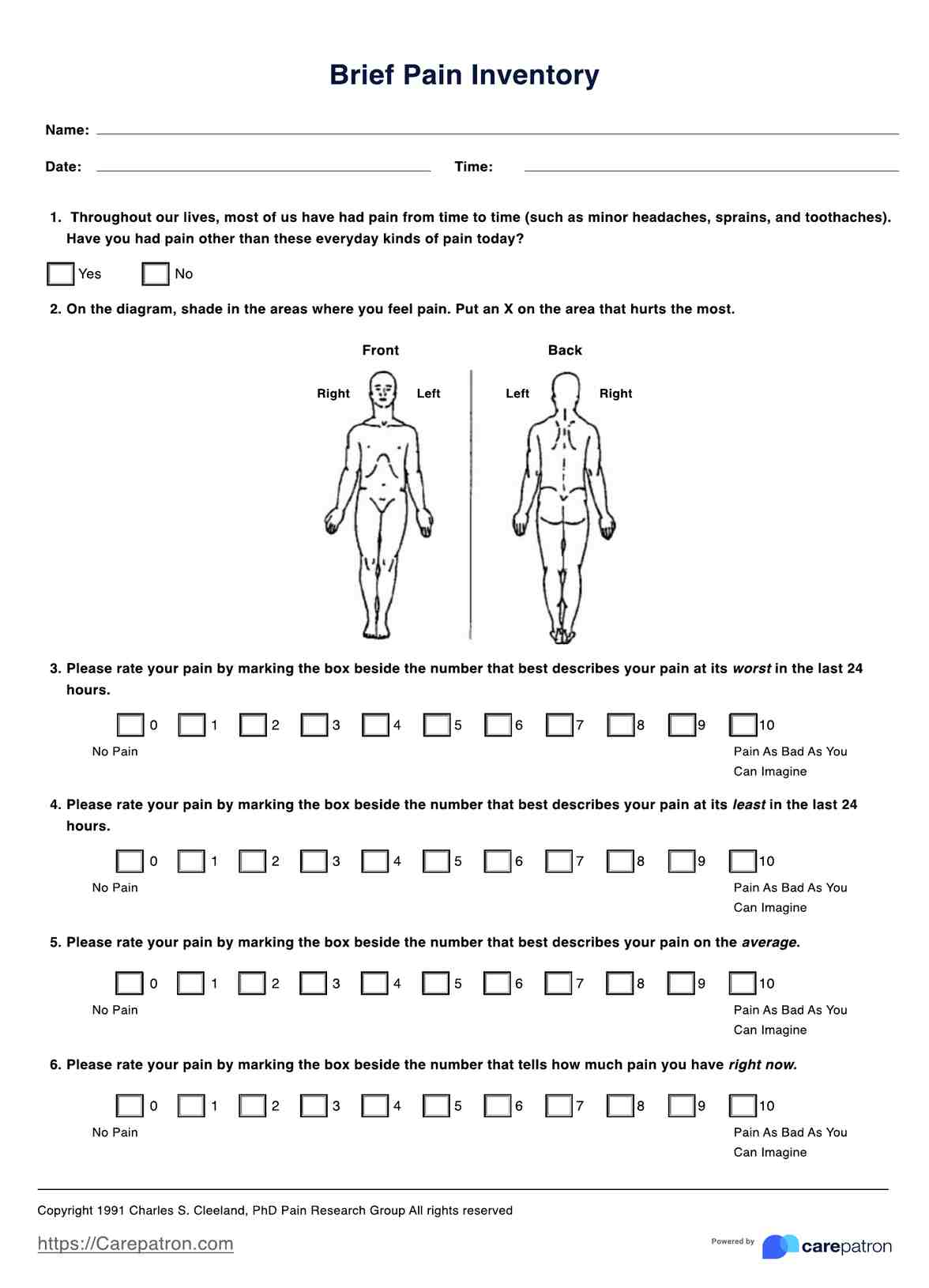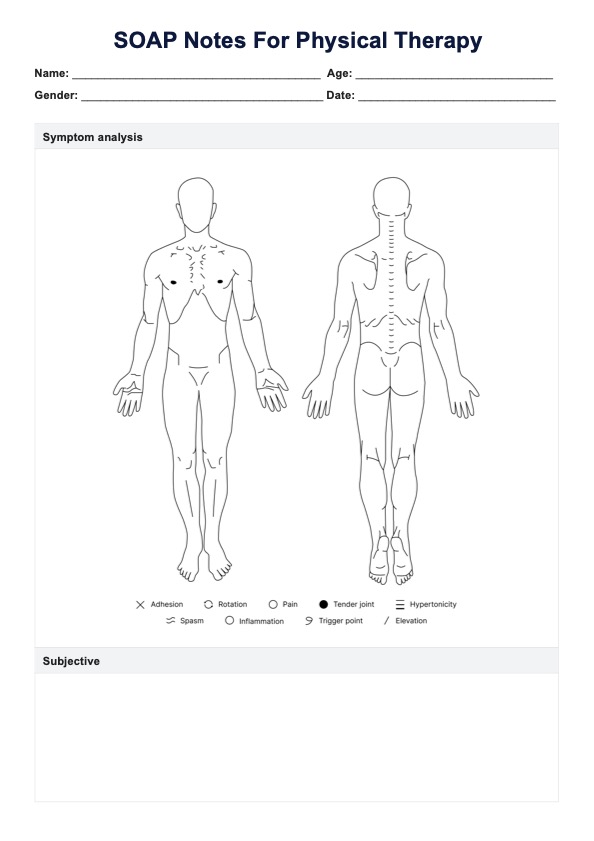Upper Extremity Functional Scale (UEFS)
Assess your patient's upper limb functionality and impairments using our free Upper Extremity Functional Scale.


What is Upper Extremity Functional Scale (UEFS)?
Upper limb pain can be caused by a variety of medical conditions, ranging from acute injuries to chronic diseases. It can occur in any part of the upper extremity, including the shoulder, elbow, wrist, and hand. This pain is often accompanied by weakness, numbness, tingling, or stiffness in the affected area.
Healthcare professionals, especially physical therapists, utilize the (UEFS) to assess the impact of upper limb pain on daily activities. This objectively measures an individual’s level of function and is one of the most commonly used tools in physical and occupational therapy.
The UEFS consists of 20 questions and assesses a person's ability to perform essential functions such as lifting, reaching, grasping, pushing, and pulling. Each question is scored from 0 to 4. The total score ranges from 0-80, where 80 indicates a complete inability to perform the tasks.
To measure lower limb extremities, clinicians can use the Lower Extremity Functional Scale (LEFS). This tool has similar items as the UEFS but is adapted for assessing lower limb pain and function.
Upper Extremity Functional Scale (UEFS) Template
Upper Extremity Functional Scale (UEFS) Example
What is the Upper Extremity Functional Scale (UEFS)?
Upper limb pain can be caused by a variety of medical conditions, ranging from acute injuries to chronic diseases. It can occur in any part of the upper extremity, including the shoulder, elbow, wrist, and hand. This pain is often accompanied by weakness, numbness, tingling, or stiffness in the affected area.
Healthcare professionals, especially physical therapists, sports medicine physicians, and even occupational therapists, utilize the Upper Extremity Functional Scale (UEFS) to assess the impact of upper limb pain on daily activities and identify functional impairment, and overall quality of life in patients. Aside from that, they also use the test to measure functional outcomes, which is crucial for assessing the effectiveness of diagnostic tools and questionnaires related to upper extremity functional limitations.
The UEFS, or Upper Extremity Function Scale, is a patient-reported outcome measure consisting of 8 items that measure the impact of upper extremity disorders on daily activities like sleeping, writing, opening a door, etc. It is often used in health and rehabilitation sciences alongside other assessments like the pain intensity scale and pain limitation scale.
Clinicians can also use the Lower Extremity Functional Scale (LEFS) to measure lower limb extremities. This tool has similar items to the UEFS but is adapted for assessing lower limb pain and function.
Meanwhile, to evaluate the upper extremity functions for recreational or sporting activities, specifically to check for any minimal detectable change in your patient in those circumstances, you may use the Upper Extremity Functional Index (UEFI) instead.
How does this UEFS template work?
Using the UEFS is quite simple. Follow these steps to get started:
Step 1: Access free UEFS assessment
Download our free Upper Limb Extremity Functional Scale template using the link on this page. You can also access it within the Carepatron app or our extensive resources library.
Step 2: Provide your patient with a copy
Give your patient a copy of the UEFS questionnaire and explain its purpose. Explain that you will be using their responses to measure their upper limb performance.
Step 3: Have your patient complete the questionnaire
Have your patient answer each question truthfully, rating their performance on a scale of 0-10. With 0 being no problem and 10 indicating extreme difficulty in doing the action.
Step 4: Score, interpret, and document the final result
UEFS scoring is done by adding their responses to get a total score. Record the score and interpret your results. UEFS scoring interpretation is pretty straightforward; the lower the score, the more able your patient is. As a final step, remember to include any relevant notes or comments in your patient's record.
When to use an Upper Extremity Functional Scale PDF?
There are a number of circumstances or situations when an Upper Extremity Functional Scale PDF proves to be useful. Some of them include:
Compare progress from the patient's baseline
Using the Upper Limb Extremity Functional Scale, you can measure your patient's performance over time and monitor their progress. This provides a valuable baseline for determining when to discharge a patient or change their treatment plan.
Assess the impact of pain on daily activities
The UEFS can help you determine how much upper limb pain affects your patient's ability to perform everyday tasks.
Determine if treatment has the desired effect
By using this tool pre and post-treatment, you can evaluate the impact of your treatments on your patient's overall functioning.
Identify areas of improvement or decline in functioning
By assessing your patient's functional abilities with the UEFS, you can identify any areas of improvement or decline. This can help you change their care plan or reassess their treatment goals.
Develop a more effective rehabilitation program
The UEFS can help you develop more effective rehabilitation programs by focusing your treatments on the areas of most significant impairment. You can also utilize it to set realistic goals for your patient's recovery.
Benefits of free Upper Extremity Functional Scale template
The Upper Extremity Functional Scale comes with a wide range of benefits. Some of the key advantages include the following:
It is an easy-to-use and quick tool for assessing upper limb performance
This free UEFS assessment template is adapted to measure the impact of upper limb pain on daily activities. You can use it to assess the abnormal or impaired movement of your patient's upper limb.
It is evidence-based
This functional scale has been developed based on evidence from research studies, making it a reliable and valid tool for evaluating upper extremities.
It is easy to score and interpret
Each question is scored from 0 to 10, with lower scores indicating better performance. Recording and interpreting the results is straightforward.
It can improve patient engagement
Using this tool helps keep your patients engaged in their treatment and can help motivate them to work on improving their upper limb performance.
It's extremely versatile
The UEFS can be used in many settings, from clinical to research. It also allows for easy progress comparison and is suitable for a wide range of upper limb conditions.
It's digital
The free UEFS template is available in digital form. It's more convenient and easier to record results. You can access it from your computer, tablet, or smartphone using the Carepatron app.
Commonly asked questions
The Upper Extremity Functional Scale (UEFS) is popular because it accurately measures upper limb performance. Healthcare professionals use the UEFS to assess the impact of upper limb pain or disability on daily activities, helping them create a treatment plan tailored to each patient.
The UEFS includes 8 items that measure a range of activities. Each question is scored from 0 to 10, with higher scores indicating poorer performance. The total score can range from 0 to 80.
The UEFS is used for measuring functional outcomes and the impact of upper limb pain or disability on daily activities.


